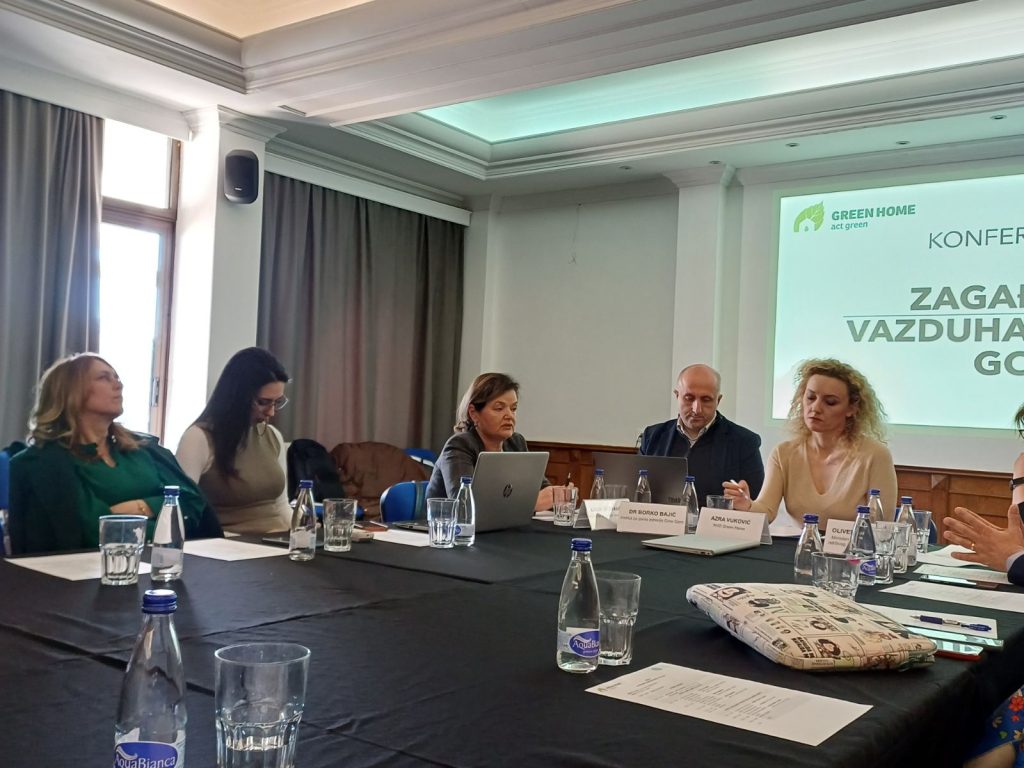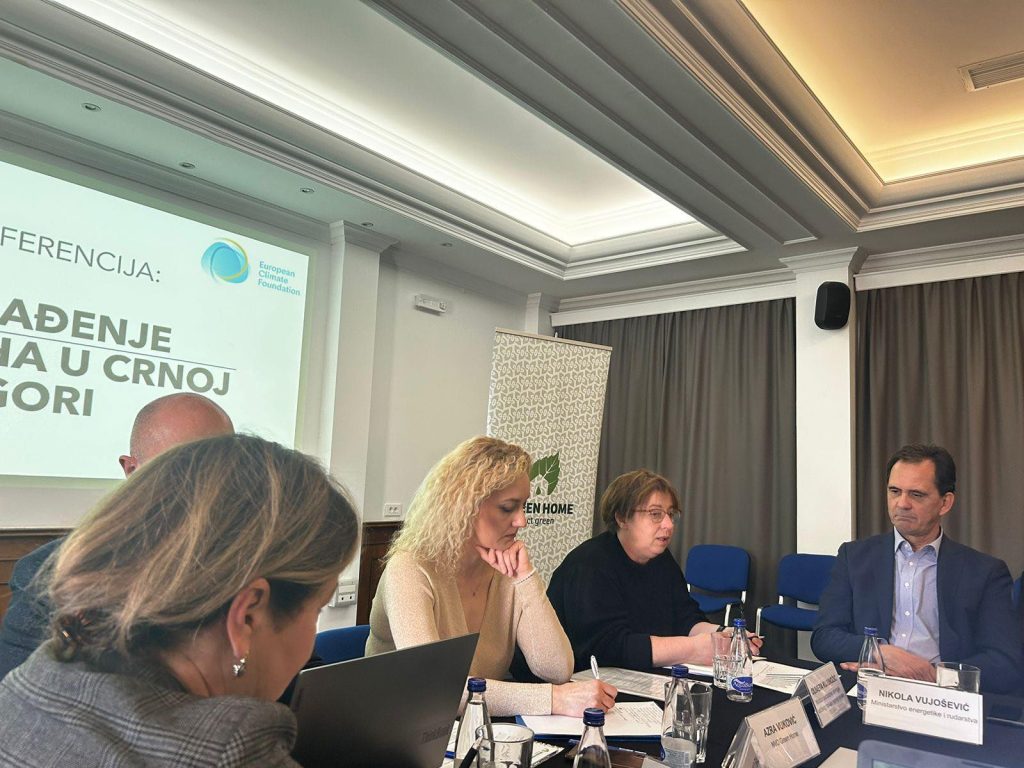The NGO Green Home organized the conference “Air Pollution in Montenegro” in Podgorica, which was attended by representatives of institutions, non-governmental organizations and the media.
Dr. Borko Bajić, on behalf of the Institute for Public Health of Montenegro, reminded the audience that air pollution is one of the most serious risks to human health, and that according to the latest estimates of the European Environmental Protection Agency, air pollution in Montenegro contributes to the premature death of around 1 200 inhabitants in the annual level, of which the greatest impact is attributed to PM particles. In addition, the importance of the fact that air pollution significantly reduces the quality of life of citizens due to various diseases, and that estimates of the impact of air pollution on human health in our country are underestimated and that the impact of polluted air on the health of the population is much greater than can be estimated using existing accepted scientific tools when taking into account the impact of all air pollutants in households and the external environment that cannot be measured or recorded in routine health statistics.

The monthly air quality monitoring reports provide us with worrying data about the air quality to which citizens are exposed, especially in the central and northern regions of Montenegro. During December 2023, the limit values of the average daily concentration of PM10 particles were exceeded in Pljevlja – 20 days, in Bijelo Polje – 22 days, in Podgorica, Zabjelo – 21 days, Blok V – 22 days, Nikšić – 20 days, and in Bar and Kotor 1 day each. Very toxic high concentrations of PM2.5 particles were measured, especially at the measuring points in the Northern and Central air quality zones.
The representative of the Environmental Protection Agency, which monitors air quality, Lidija Šćepanović, presented monthly data on air quality in Montenegro in January 2024, stating that due to more favorable weather conditions characterized by a greater presence of windy days, these data are slightly better in compared to December, so the registered exceedances of the limit values of the average daily concentration of PM10 particles are: In Pljevlja – 18 days, Bijelo Polje – 21 days, in Podgorica, Zabjelo – 17 days, Block V – 12 days, in Nikšić – 8 days. She also emphasized the importance of the fact that 47% of the population lives in the central zone, while 24% of the population lives in the northern zone, and that the largest percentage of the population is continuously exposed to pollution. Montenegro has not adopted a program of measures to reduce emissions of polluting substances included in the NEC Directive. This obligation towards the citizens, but also towards the European Union, should have been adopted in the form of the National Air Quality Management Strategy for the period 2021-2029. year, but it has been in the draft since 2019. This strategic document had to be harmonized with the National Energy and Climate Plan, which should define further strategic directions in the energy sector, but also define guidelines for achieving the climate goals of Montenegro, which is also not finished, although it has been under development since 2018. . After several years of complete stagnation in the work on this document, the relevant Ministry of Energy and Mining has restarted this process.

At the conference, it was concluded that it is necessary to define a strategic framework that will define the further development of the energy system, which is the main air polluter in Montenegro, measures to improve air quality, but also significantly greater participation of local self-governments in the direction of the implementation of measures at the local level in order to reduced the impact of air pollution on citizens’ health.
The conference was an opportunity for the presentation of the Comparative Analysis of different types of heating in Podgorica, which was prepared by the NGO Green Home in the previous year (available here). In the Analysis, it was assessed that the method of using firewood in Montenegro is quite inefficient, because the wood is burned in boilers and furnaces with a low level of utilization below 65%, whereby only a certain part of the energy is converted into useful heat, and significant air
